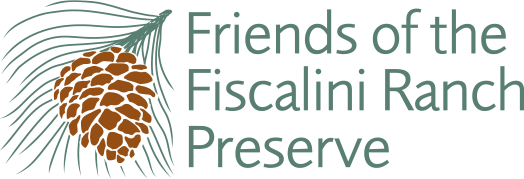2022.04.13 | Warning: Poison Oak & Ticks!

Photos: poison oak berries by Noah Elhardt; spring leaves by Franco Folini, fall leaves by Phillip Bouchard.
Visiting the Fiscalini Ranch Preserve or walking other trails around Cambria may mean exposure to poison oak, ticks, or both. More than half of us are allergic to the urushiol oil that is produced by poison oak (Toxicodendron diversilobum) so should take care to avoid contact with that plant. Within 12 to 48 hours after exposure, sensitive people develop swelling and an itchy rash that can last from two to three weeks. Dogs are protected from poison oak by their fur but can transmit urushiol oil to people. Ticks are attracted to people, dogs, and many other animals.
Friends of the Fiscalini Ranch Preserve volunteers are awfully familiar with these risks since they work around lots of poison oak and are frequently exposed to ticks while they weed or maintain trails. Here are a few tips they have picked up for what to do when you are going to be around lots of poison oak and/or ticks:
Before exposure:
- Take a lesson from dogs and fully cover your body with long sleeves, long pants, boots, and gloves. Don’t forget to wear socks that cover your ankles.
- Spray your shoes and clothes with tick repellant.
- Keep your dog on leash to reduce contact with poison oak or tall grasses and shrubs where ticks wait.
After exposure:
- Before entering your car, take off your work gloves and put on disposable gloves.
- Before entering your house wipe down your boots, including the laces, using a rag soaked with isopropyl alcohol. You may want to keep your disposable gloves on for this step.
- Likewise, wipe down your hands and arms using a clean rag soaked with isopropyl alcohol.
- If your dog was exposed to poison oak, wipe down the dog as well so you are not exposed to oils on the dog’s fur.
- Strip down (if you are in the garage), check for ticks, and if you find any, pull them off. It takes several hours before ticks become deeply embedded, so if you find them right away, removal is easy. Most ticks on the Central Coast don't carry Lyme disease, and the experts say it takes a day or two before an infected tick can transmit Lyme disease to humans.
- Check your dog for ticks and remove them.
- Put your poison-oak contaminated clothes and cleaning rags in the wash and put on clean clothes for your trip to the shower.
- Shower thoroughly with a soap like TecNu since there is no telling where you may have absentmindedly spread the nasty urushiol oil from the poison oak. Cambria True Value Hardware sells TecNu on the mercantile store side.
Poison oak is an irritant to people but is valuable to wildlife. Songbirds eat the berries, poison oak thickets provide protected nesting locations for quail and California towhees, and its leaves are eaten by deer and wood rats. Poison oak is such a vigorous grower that it outcompetes invasive species, keeping our area natural. It also provides wonderful fall color when its leaves turn bright red. And yes, even ticks have ecological value as food for insect-eating animals. Both poison oak and ticks are part of the local ecosystem, but parts that we should treat with caution.
Article first published in https://cambriaca.org/


